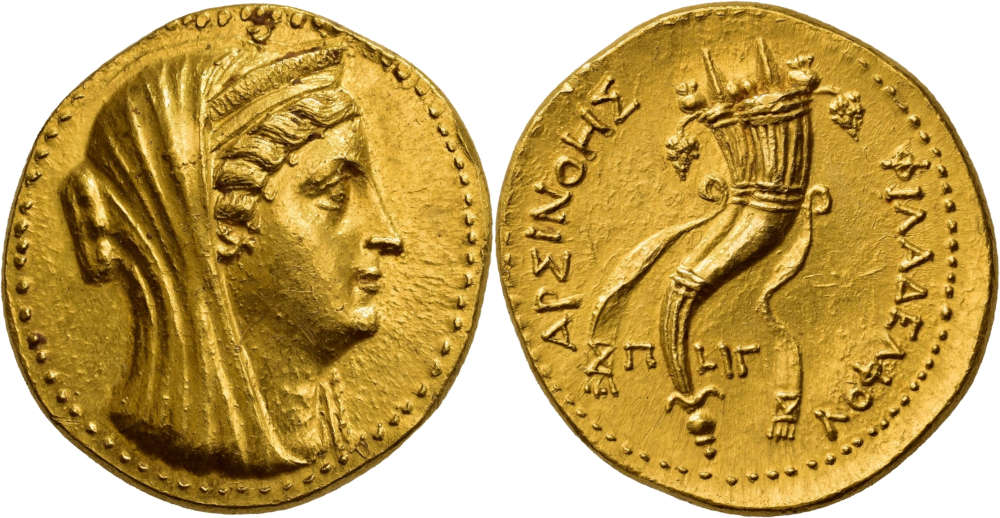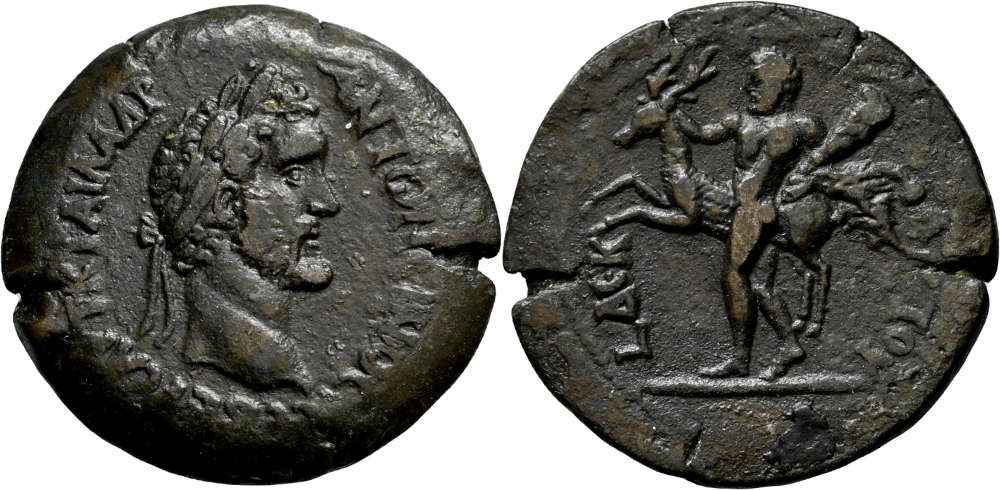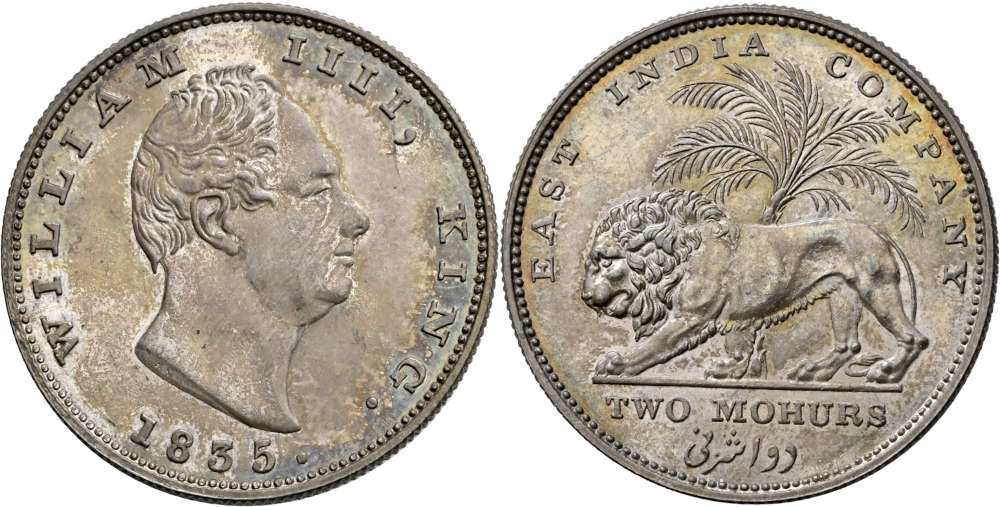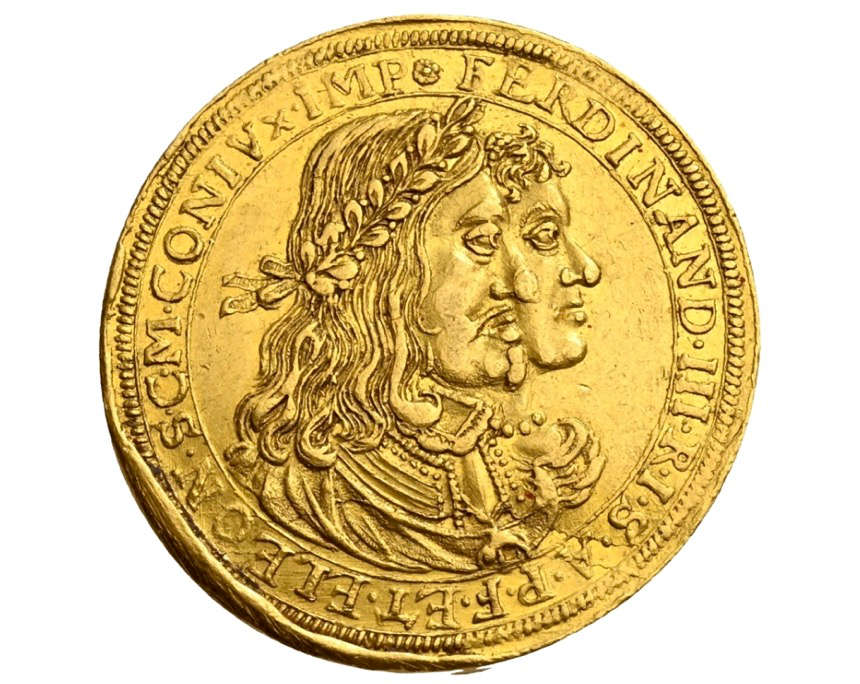Strong Prices for the Hoesch Collection – Hunting and Animals
Dr. Busso Peus Nachf.
Auctions 437-438
Coins
24-26 April 2024
D-Frankfurt a. M.
The Dr. Busso Peus Nachf. spring auctions 437/438 were a complete success and the universal collection Hoesch – Hunting and Animals in particular deserves a detailed review of three turbulent auction days.

Lot 284: Greek. Ptolemy V Epiphanes (204-180 BC). Gold Octodrachm, 193/192 BC, Paphos. Very rare. Slightly rough on the obverse, Very Fine/Extremely Fine. Estimate: 7,500 EUR. Hammer Price: 22,000 EUR.
Demand for ancient coins has remained high for many years. Specimens of exceptional quality are particularly valued by the customers, which is reflected in high price increases compared to the estimates. For example, a didrachm from Neapolis fetched €1,900 at an estimate of €400 (no. 13). A particularly fine bronze coin from Phalanna (no. 132) was raised from €75 to €800, and the contemporary imitation of a rare stater from Eretria (no. 146) could only be hammered at €8,000 (estimate €1,000). The title piece, the fine octodrachm of Ptolemy V (no. 284), triggered a bidding war from a moderate estimate of €7,500, which only ended at €22,000. Of the rare Trier gold, the solidus of Arcadius (no. 586) should be mentioned as an example, which rose from €2,500 to €9,500.

Lot 1204: Germany. Imperial City of Augsburg. 4 Ducats 1657, featuring the titles of Ferdinand III. and Eleonore, struck from the dies of the Double Ducat. Unedited at this weight. Slightly waved, Extremely Fine. Estimate: 15,000. Hammer Price: 28,000 EUR.
Continuing on the first day of the auction, with the non-German coins, it became clear that customers from all over the world are keeping a close eye on the auctions. Numerous coins went back to their home countries or to other strong markets at high prices. Of course, German collectors also had their chances. The same can be said of the market for coins of the Habsburg hereditary lands, where interest from East Central Europe remains strong. In the case of feudal German coins, a range of coins and medals in gold and silver and all price categories was warmly received. A previously unknown 4-fold ducat 1657 from Augsburg (no. 1204) fetched €24,000 and a Hessian ducat of Ederriver-gold (no. 1445) realized €16,000. The Frankfurt coin collection achieved good prices across the board.
A highlight of the entire auction followed right at the beginning of the second day. A remarkable collection of silver medals by the medallist Karl Goetz brought record results in some cases. The international market also played a major role here. Almost all of the late works in particular went to China or the USA for top prices via the Internet. The hammer price of the collection was almost two and a half times higher than the estimate.
The Wurttemberg collection also brought very satisfactory results before the German coins after 1871 and favorably priced lots concluded a very successful auction.

Lot 3106: Roman Provincial. Egypt, Alexandria. Antoninus Pius (138-161). Drachm, 146/147. Dark green patina, 3rd known specimen. Fine. Estimate: 750 EUR. Hammer Price: 22,000 EUR.
Los 3106: Provinzialprägungen. Ägypten, Alexandria. Antoninus Pius (138-161). Drachme, 146/147. Dunkelgrüne Patina, 3. bekanntes Exemplar. Schön. Taxe: 750 EUR. Zuschlag: 22.000 EUR.Auction 438, Rudolf Hoesch Collection, Animals & Hunting, developed a special dynamic. Many of the attractive pieces had been vanished from the market for many decades, in some cases for 70 years, and the market welcomed them back with open arms. This resulted in numerous impressive results that sometimes exceeded the cataloguer’s imagination. The rare drachm of Rhegion (no. 3024) was bid up from €750 to €3,600. The drachm of Hyrtakina from the Niggeler collection (no. 3051) raised up from €3,000 to €12,000, while the half-shekel of Sidon (no. 3084) increased its estimate twelvefold from €1,000 to €12,000. An exceptionally well-preserved Alexandrian drachm (no. 3106), known in only 3 examples, increased its price from €750 to €22,000 – impressive proof that as soon as rarity and quality come together, anything seems possible at the moment.

Lot 3185: India. William IV of Great Britain (1830-1837). 2 Mohurs, 1835, Calcutta, silver strike, minted for the East India Company. Fine patina, Very rare. Minor scratches, Proof. Estimate: 5,000 EUR. Hammer Price: 55,000 EUR.
The quality of the collection then continued unabated with the foreign coins. Here, a silver off-metal strike of an Indian double mohur 1835 (no. 3185), estimated at €3,000, achieved a hammer price of €55,000. The top results continued. The hammer price of the non-German coins was more than 270 % above the estimate. The coins of the Habsburg hereditary lands and the feudal states of old Germany often went into the five-figure range. The special collection of Stolberg coins created by the uniform stag portrait was also well received before a few coins from the German colonies formed the worthy crowning glory of the collection at the end of the day. Here, two excellently preserved German New Guinea coins, 10 marks 1895 (no. 3647) for €48,000 and 20 marks 1895 (no. 3648) for as much as €75,000, changed hands.
Overall, the Hoesch collection – Hunting and Animals, exceeded its estimate by 80 % and achieved a total hammer price of over 1.8 million euros with 687 lots.








